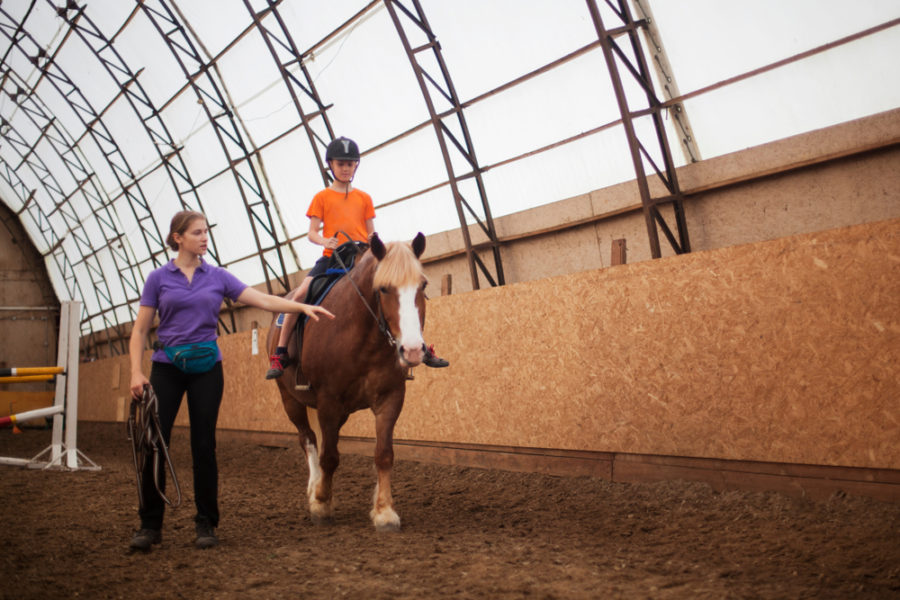Do you dream of earning a living with your horses, but aren’t sure how? This article outlines a few creative ways that equestrians can turn their passion into a profit.
Most people think of the traditional equine disciplines when envisioning a career with horses. But competing, boarding, training and teaching lessons aren’t the only options when it comes to earning a living with horses. In fact, most successful horse barns make the majority of their profit from other areas.
Considerations to get you started
Equestrians often dream of earning riches from opening their private barns to boarders. Few, however, factor in actual costs when setting prices. Hay, grain, and bedding are obvious, but things like electricity, labor, repairs, insurance, water, farm equipment, and fuel costs are not.
“One of the keys is to think of it as a business,” says Callie Rae King, owner of Honey Brook Stables and CRK Training. “A lot of people get into boarding and doing lessons or training and they do it as hobbyists.” But things like marketing, budgeting, insurance considerations, and planning for growth by calculating your hours as costs are key issues to address if plans include creating a profitable entity
It’s important to understand your goals, expenses and anticipated income from the onset. Two of the areas King notes as critical for professional operations is differentiation and bringing in help.
“Before launching your business, it’s important to ask yourself: what am I offering that’s different than the other ten businesses in the area?” says King. “Make note of what you pride yourself on, and communicate that to your boarders. Understand the atmosphere you want to create.”
Another important consideration is what you’d like to pay yourself. “How much time are you putting in?” asks King. “If you ever want to operate truly as a business, where you have any capability to take time off or pursue other things, you have to work your own salary into the budget.” Once you have a number in mind, figure out how much you’ll have to bring in to cover your salary, as well as expenses.
 “Hiring people is another big learning curve,” King says. “Starting that learning process as early as possible, getting used to working with people, giving feedback and having tough conversations with employees — I think all of that is really important.” This type of forethought enabled King to move to California while staff operates her Pennsylvania farm without her – all before the age of 30.
“Hiring people is another big learning curve,” King says. “Starting that learning process as early as possible, getting used to working with people, giving feedback and having tough conversations with employees — I think all of that is really important.” This type of forethought enabled King to move to California while staff operates her Pennsylvania farm without her – all before the age of 30.
Multiple revenue sources help with solvency
There’s a lot of fixed overhead with horse farms. Economic conditions affect horse sales, boarder demand, and other income streams. Rising variable costs such as feed, bedding, and fuel can quickly put a profitable business in the red. Smart equestrian facility owners diversify their income streams to hedge against fluctuations.
While large operations traditionally rely on horse sales, shipping, showing, training and other add-ons to make their business profitable, there are a lot of easy ways smaller barns can reduce risk and increase revenue:
Factor extra costs into your boarding fee – Things like trailering, holding horses for the blacksmith, turnout, and veterinary care all cost time and money. Factor these into your board price or share a document detailing these additional costs with boarders upfront.
Offer additional services – Can you offer conditioning training or exercise services? If you have good trails or land with hills, this can be popular with both boarders and ship-ins competing in vigorous sports such as racing, endurance riding or eventing. It’s also something you can offer to boarders who can’t get out to the farm regularly.
Grooming services appeal to both boarders and equestrians in your community. Charges for braiding manes and tails are generally in the $50 to $100 range, and pulling manes for $15 to $35 is reasonable. If you’re in a cooler climate and talented with clippers, most charge $100 or more per horse for this service.
Sell your manure – Good rich compost is in demand these days. Horse manure cures in three to six months. Selling it to community gardeners also eliminates the cost of hauling it away. Consider an appointment-only self-serve approach to save time, money, and headaches. If you have a tractor with a bucket, you can offer pickup truck quantities with an added loading fee.
Establish good pasture management practices – Pastures are most productive and nutritious with rotational grazing. Good fields can reduce feed costs substantially. If you also want to offer pasture board, ensure you have adequate run-in shelter space and ample, daily clean water. There are additional costs for hay and grain when pastures are poor, so be sure to factor this into your fees.
Differentiating, planning ahead, diversifying, and a little creativity all allow horse lovers to fuel their passion while avoiding the risk of burnout.








